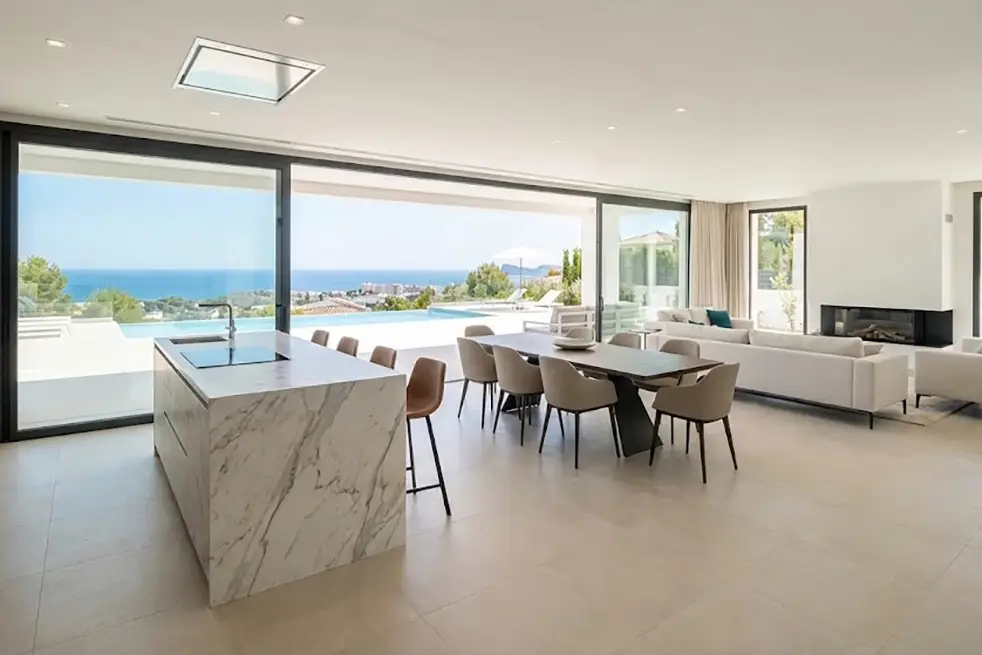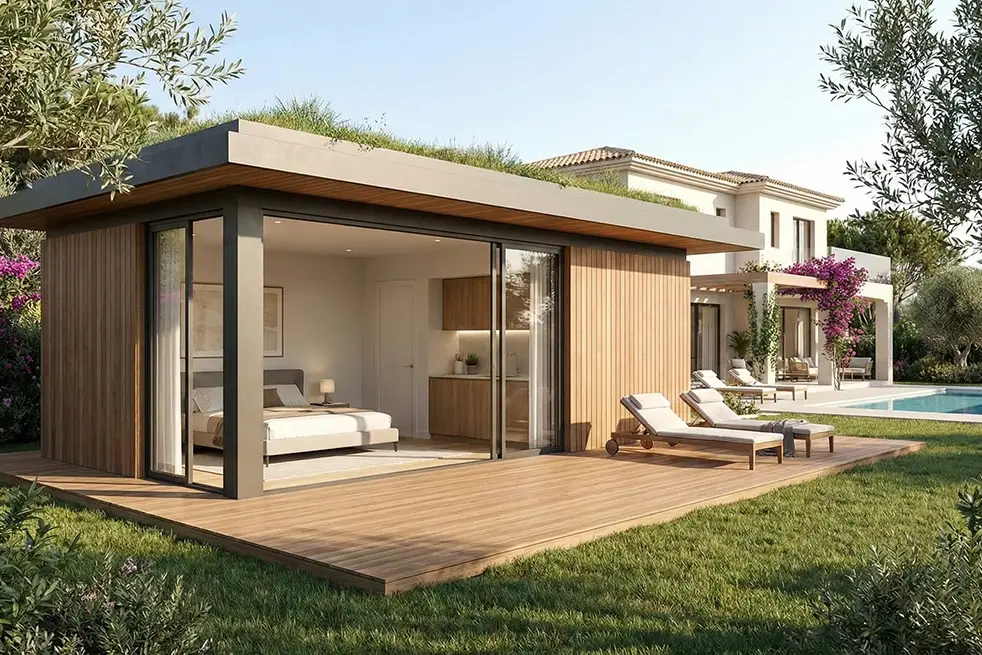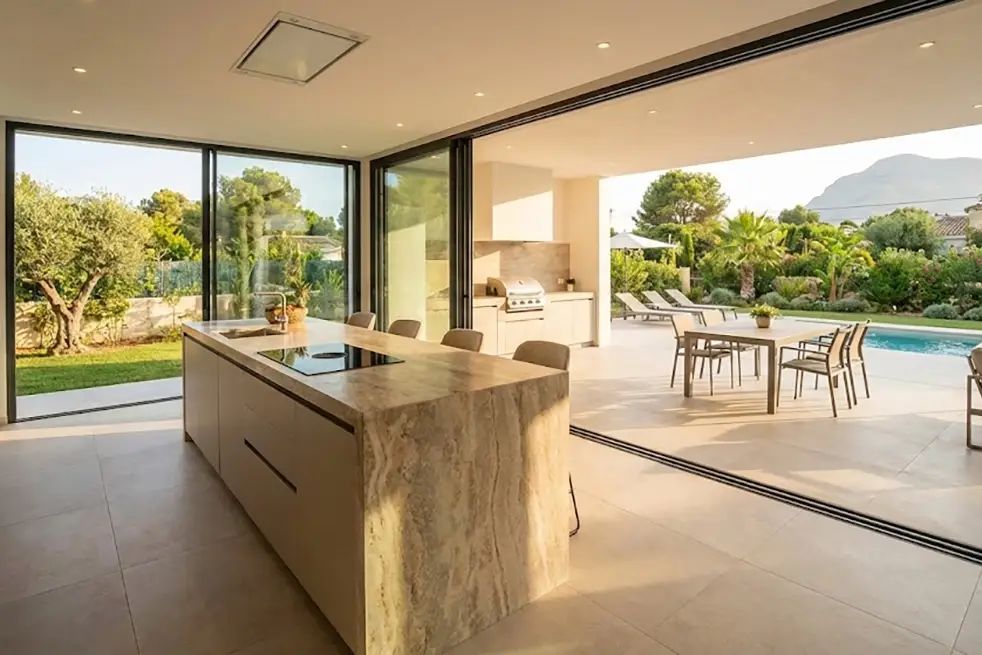Now more than ever, talking about eco-sustainable housing means talking about the future. It’s no longer just a matter of trends or passing fashions—building with the environment, resource efficiency, and quality of life in mind is an unavoidable necessity.
At La Quinta Fachada Arquitectura, every project we take on starts with a clear premise: to design homes that are beautiful, functional, and above all, respectful of their surroundings.
A sustainable home begins with a simple idea: to achieve maximum comfort with minimal impact. It doesn’t mean compromising on quality or design—quite the opposite. It means building in a smarter, more conscious, and longer-lasting way.
What truly defines an eco-sustainable home?
An eco-sustainable home combines energy efficiency, responsible use of resources, and low-impact materials. From the very first stages of planning, the aim is to minimise energy consumption by focusing on passive design and integrating technologies that harness renewable energy sources.
But it’s not just about technology. Bioclimatic design plays a key role: building orientation that captures sunlight in winter and blocks it in summer, natural cross-ventilation that reduces the need for artificial cooling, solar protection through green pergolas or strategically placed overhangs…
Every architectural decision directly affects interior comfort and overall energy performance.
When we compare energy use between a traditional home and an eco-sustainable one, the savings are far from marginal—annual energy costs can be reduced by 50% to 70%.
A truly sustainable home doesn’t just consume less—it also creates a genuine sense of wellbeing, noticeable every day in the quality of the air, the stable indoor temperature, and the natural light that floods every space. Living in a home designed to integrate with its surroundings transforms the way we inhabit our living spaces.
Renewable energy sources as the driving force of the home
Achieving an eco-sustainable home means meeting energy demands through renewable energy sources. Some of the most common options include:
-
Photovoltaic solar panels for electricity generation
-
Solar thermal systems for water heating
-
Aerothermal systems for efficient heating and cooling
-
Rainwater harvesting and reuse for irrigation or cleaning
These solutions not only improve energy efficiency; they also increase the home’s autonomy from energy market fluctuations and help protect the property’s long-term value.
Natural building materials: Building with purpose
Another key feature of eco-sustainable homes is the use of natural building materials. Choosing materials with a low ecological footprint not only improves the building’s efficiency but also enhances indoor air quality and the overall durability of the home.
Some notable materials include:
-
FSC-certified wood for structures, cladding, and furniture
-
Natural insulators such as recycled cellulose, cork, or sheep’s wool
-
Locally sourced or low-impact stone for floors, walls, and paving
-
Hydraulic lime mortars instead of industrial cement
These materials respect the natural life cycle of the building and help create healthier spaces that are more in tune with their surroundings.
Outdoor and open spaces: Nature as part of the home
An eco-sustainable home is conceived as a constant dialogue between indoors and outdoors.
The design of open spaces—such as terraces, courtyards, gardens, and vegetable plots—is essential to creating continuity between architecture and the landscape.
These outdoor areas are not just for aesthetics or leisure; they serve as genuine bioclimatic strategies that enhance natural ventilation, provide seasonal shade, increase biodiversity, and help regulate the temperature of the immediate surroundings.
A well-designed sustainable home integrates these green spaces organically, allowing the house to breathe, connect, and evolve alongside the nature that surrounds it.
Eco-sustainable home: An investment in the present and a guarantee for the future
Choosing an eco-sustainable home is a smart investment.
The benefits go beyond energy savings or reduced environmental impact: a home designed according to sustainable principles improves its occupants’ health, supports emotional wellbeing, and becomes a more solid, long-lasting asset.
Moreover, sustainable living educates, inspires, and connects. Every small daily action—watering with recovered rainwater, ventilating naturally, living alongside a home-grown vegetable garden—becomes a conscious act of care for the planet.
A new way of building and living
Eco-sustainable housing is no longer a distant alternative or an elitist option. It is the new standard of quality, beauty, and responsibility that every committed form of architecture must embrace.
Building with the environment in mind is not only an ethical duty—it is the best way to ensure our homes are healthier, more welcoming, and ready for the future.
At La Quinta Fachada Arquitectura, we see every project as an opportunity to create more than just a house: we design living homes—conscious, kind to their surroundings, and deeply human.
Because building better means living better.
Would you like to design your eco-sustainable home with us?
At La Quinta Fachada Arquitectura, we guide you through the entire process—from the initial idea to the delivery of a unique home, designed to reduce energy consumption, integrate with the landscape, respect the environment, and suit your lifestyle.
Get in touch with us and discover how we can help bring your eco-sustainable home project to life.
Living in harmony with nature begins with a single decision: to build with the future in mind.




